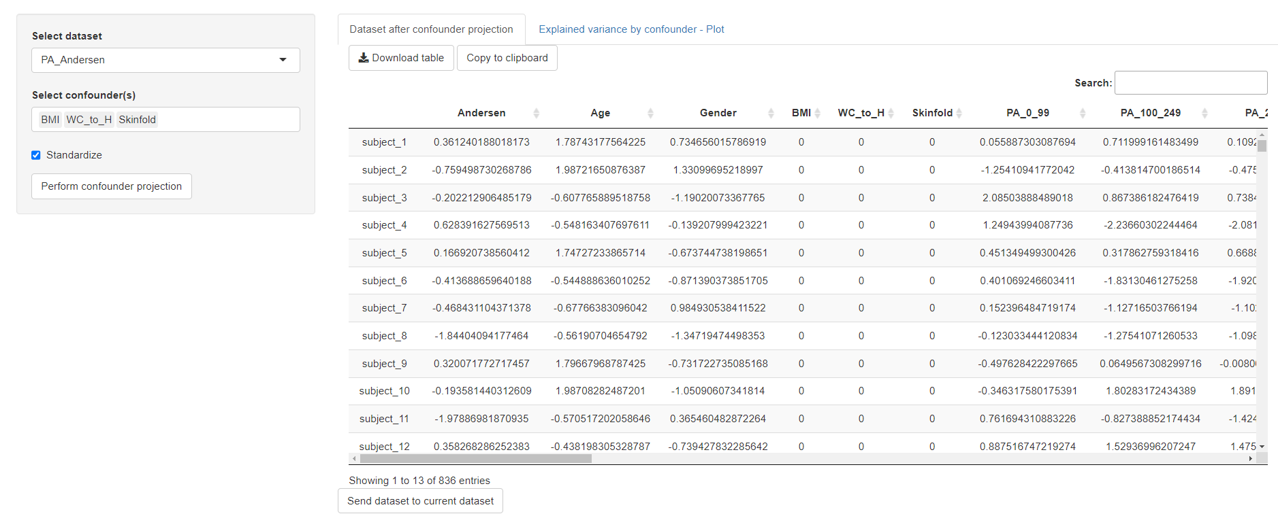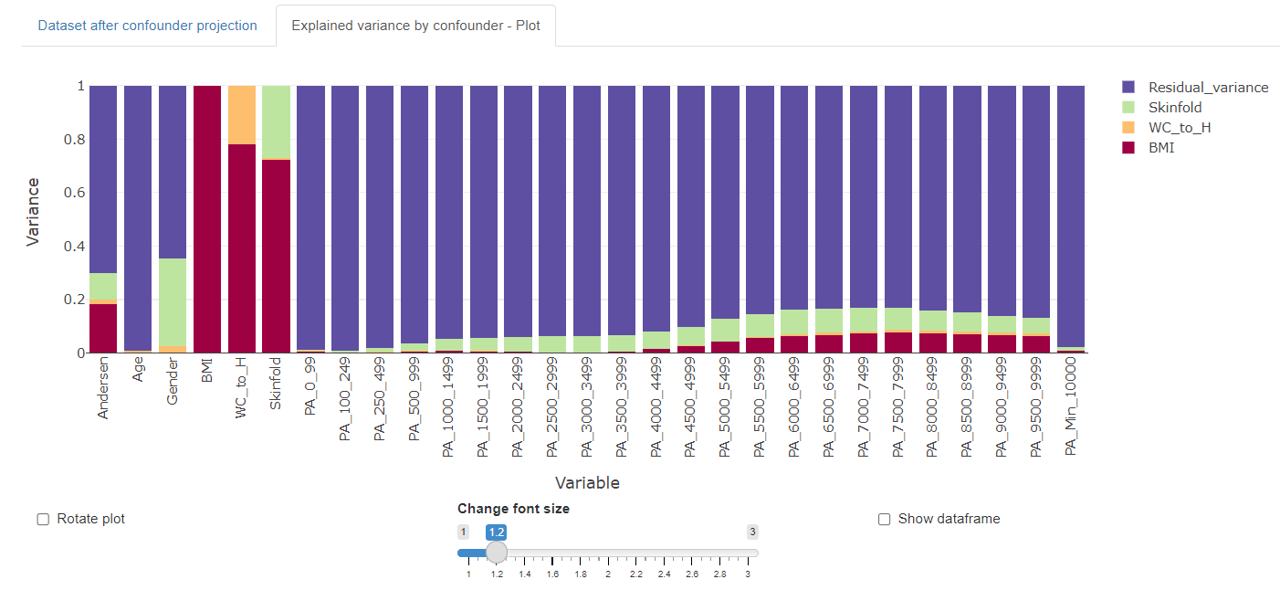Covariate projection
Covariates (or confounders) are variables that are associated with both an explanatory and a response variable. In other words, they interfere with or obscure the relationship between the explanatory and response variable. An example is the influence of adiposity (covariate) on the relationship of physical activity (independent variable) and the resulting aerobic fitness (response).
Covariance projection is a method to adjust covariate influence in multivariate datasets by defining a covariance weight vector wCP that is multiplied with the centered augmented data matrix Xaug that contains X, y and also the covariates z (Xaug = [X, y ,z]). The weight vector wCP has as many entries as variables exist in Xaug and contains zeros in positions of X and y and ones in z position (= covariate entry). This enables the calculation of the covariance projection scores tCP and subsequently the loadings pCPT.
1) tCP = Xaug wCP
2) pCPT = tCPT Xaug / (tCPT tCP)
Using the loadings and scores, the adjusted augmented Eaug can be calculated (= Dataset after covariate projection in mvpaShiny covariate projection tab).
3) Eaug = Xaug – tCP pCPT
This matrix can be used to perform follow-up analyses like PLS-regression. Ideally, the influence of the covariates have been removed so that the “real” relationship between explanatory and response variables can be determined.

In order to perform the covariance projection in mvpaShiny a dataset needs to be selected (= Xaug) and the covariates have to be defined. Standardization is a useful and recommended step to equalize variables importance. The Perform covariate projection button will start the calculation.
NOTE: The order of selected covariates matters when the explained variance by covariate plot is viewed. While Eaug will be identical, the explained variance by the individual covariate might differ.
Explained variance by covariate plot
